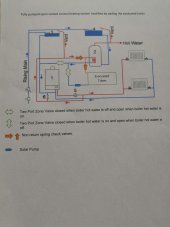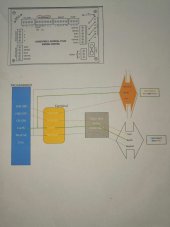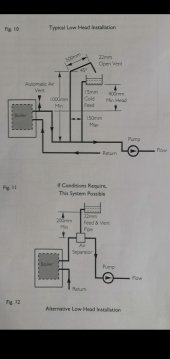I live in UK and wish to incorporate solar hot water heating into fully pumped central heating system. Do you think that the proposed changes shown in the attached would work without an expansion vessel and an air vent. Please note that the gas boiler has already got an air vent installed to the pipe work. Also attached the gas boiler electrical diagram/programmer incorporating the 2 port zone valves and solar controller.
Incorporate solar hot water heating into fully pumped central heating system
- Thread starter SBT
- Start date





